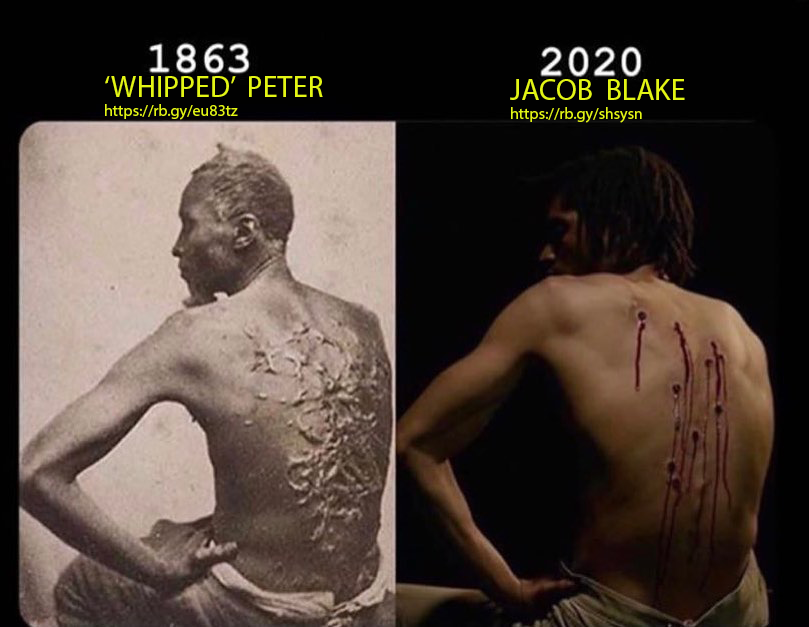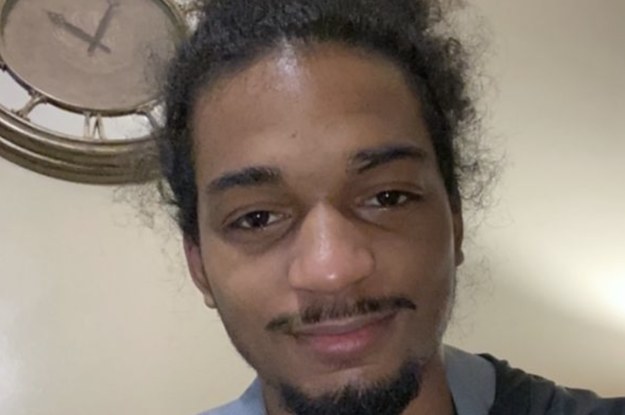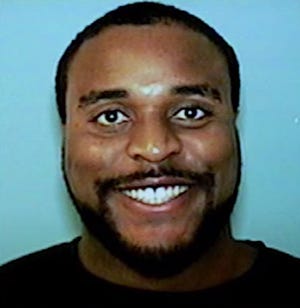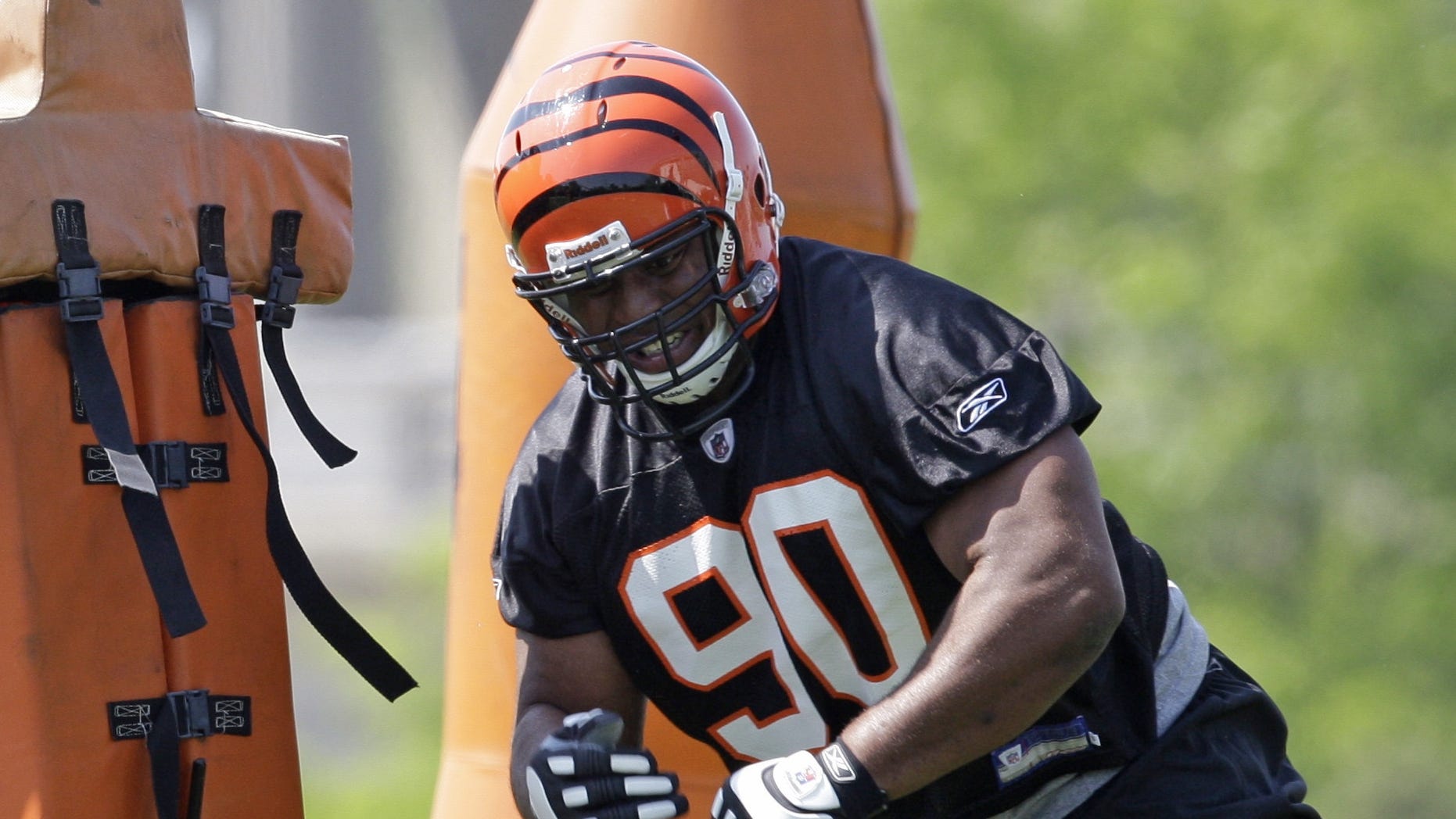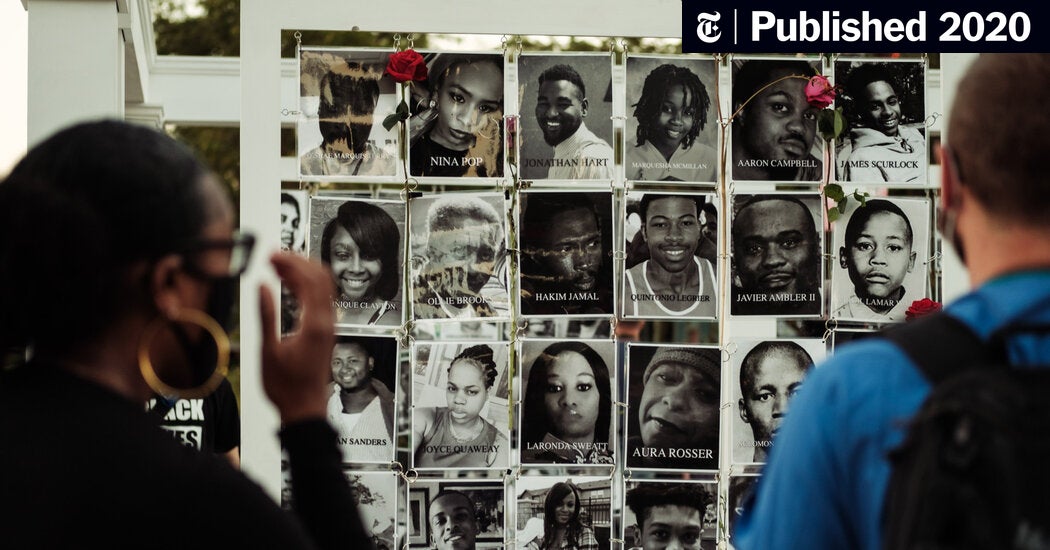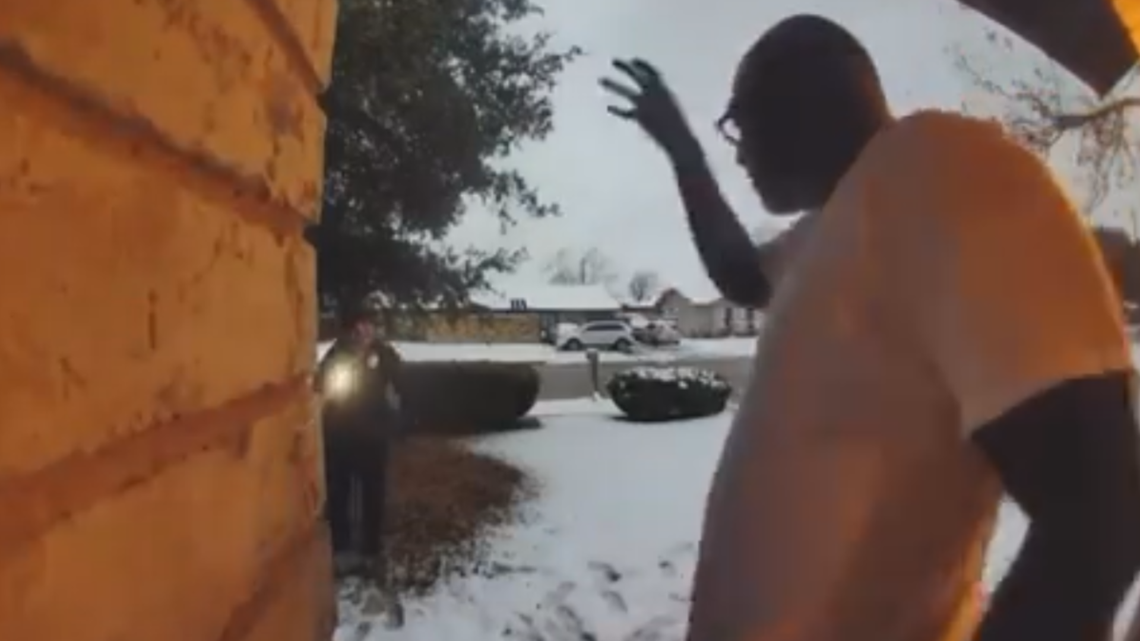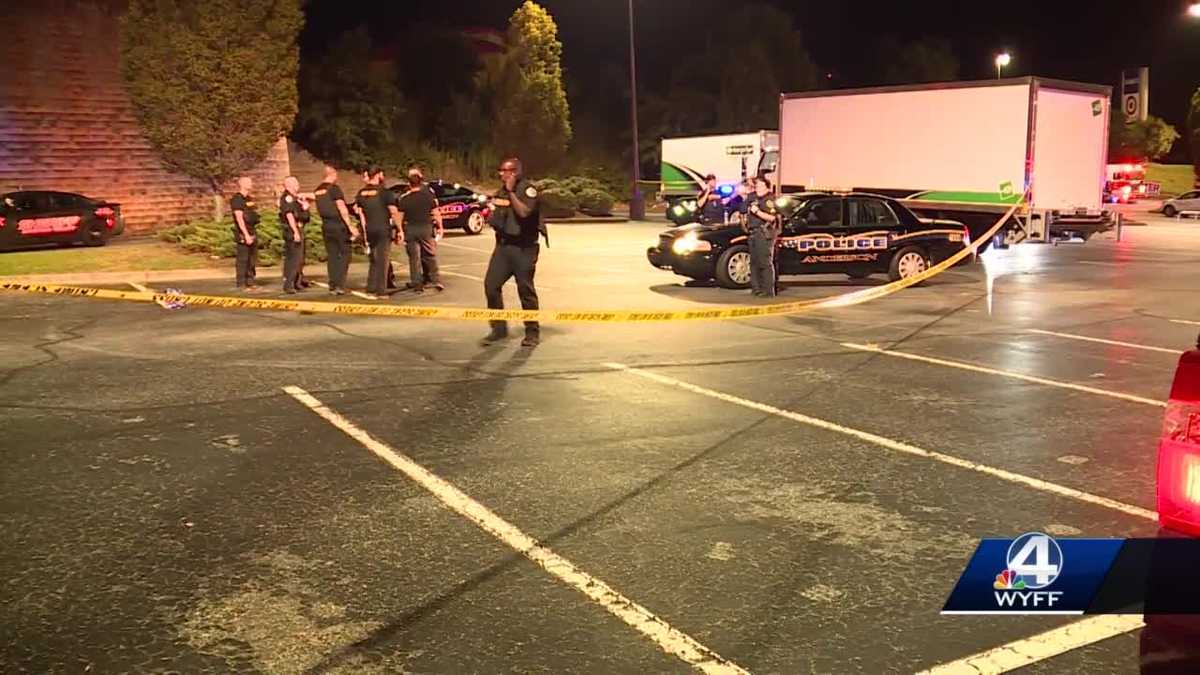Ronell Foster was riding his bicycle through the hushed streets of Vallejo, Calif., one evening when a police officer noticed that the bike had no lights and that he was weaving in and out of traffic.
The officer, Ryan McMahon, went after Foster with lights flashing, siren blaring and the car's spotlight pointed directly at him. Foster stopped. The pair exchanged words before Foster, who was on community supervision for a car theft conviction a month earlier, fled, eventually ditching the bicycle. McMahon caught up with Foster and jumped on top of him. The two struggled. McMahon, a rookie on the force, used a Taser on the father of two and struck him several times with his department-issued flashlight. Gunfire erupted — seven shots total. When it was over, Foster, 33, lay dying in the bushes in a darkened courtyard near an apartment complex.
Solano County District Attorney Krishna Abrams declined to bring charges against McMahon, who is white, saying the February 2018 fatal shooting of Foster, who was Black and unarmed, was justified. In a Jan. 31, 2020,
letter to the Vallejo police chief, Abrams said that Foster "posed an immediate and extreme threat" to McMahon and that it was "objectively reasonable for Officer McMahon to defend himself and open fire on Foster."
Article continues after sponsor message
Enlarge this image
Ronell Foster was fatally shot by Vallejo, Calif., police Officer Ryan McMahon in 2018 after being stopped for riding his bicycle without a light. Foster was unarmed.
Foster family
A year later, he shot again.
This time, the slain man was aspiring Black rapper Willie McCoy, who was asleep in his silver Mercedes CLS500 outside a Taco Bell shortly before 11 p.m. on Feb. 9, 2019. An employee called 911 to report that McCoy was slumped over the steering wheel and blocking the drive-through. When McMahon and other officers arrived — six in all — one of them spotted a semiautomatic pistol in McCoy's lap. As McCoy slowly awoke, he moved his hand to scratch his chest, according to a report by an expert the city hired to review the shooting. Officers believed he was reaching for the gun, so they fired 55 shots in 3.5 seconds. McMahon said he fired after believing that the officers and residents were in "imminent danger." Officials cleared him over his role in that killing, too, but he was fired in September for violating department policy during the shooting "by engaging in unsafe conduct and neglect for basic firearm safety," a department official said.
"It's a very sad situation," McMahon said in a brief interview with NPR. "It's something I'm still dealing with. It hasn't gone away."
The deadly shootings of unarmed Black men and women by police officers in the U.S. have increasingly garnered worldwide attention over the last few years. The 2014 killing of Michael Brown in Ferguson, Mo., sparked a week of protests that catapulted the Black Lives Matter movement into the national spotlight. Since then, tens of thousands of people across the country have taken to the streets to protest police brutality of Blacks by mostly white officers.
Since 2015, police officers have fatally shot at least 135 unarmed Black men and women nationwide, an NPR investigation has found. NPR reviewed police, court and other records to examine the details of the cases. At least 75% of the officers were white. The latest one happened this month in Killeen, Texas, when Patrick Warren Sr., 52, was fatally shot by an officer responding to a mental health call.
For at least 15 of the officers, such as McMahon, the shootings were not their first — or their last, NPR found. They have been involved in two — sometimes three or more — shootings, often deadly and without consequences.
Those who study deadly force by police say it's unusual for officers to be involved in any shootings.
"Many officers will go their entire career without shooting — sometimes without pulling their gun out at all," said Peter Scharf, a criminologist and professor in the School of Public Health at Louisiana State University and co-author of
The Badge and the Bullet: Police Use of Deadly Force. "It's rare."
Not every law enforcement agency releases detailed information about police shootings. The Los Angeles County Sheriff's Department and the Kansas City, Mo., Police Department, for example, refused to release specifics such as officer names or their race, citing open investigations.
Still, NPR reviewed thousands of pages of job applications, personnel records, use-of-force reports, citizen complaints, court records, lawsuits, news releases, witness statements and local and state police investigative reports to examine the backgrounds of the officers and analyze details of each shooting. We also interviewed use of force experts, criminologists, police, lawyers, prosecutors and relatives of victims.
Among NPR's other findings:
- At least six officers had troubled pasts before being hired onto police departments, including drug use and domestic violence. One officer had been fired from another law enforcement agency, and at least two others were forced out.
- Several officers were convicted of crimes while on the force, such as battery, and resisting and obstructing, but kept their jobs. In one instance, officials in a tiny Louisiana parish repeatedly fired and rehired a deputy who got into trouble with the law: three times over 30 years, records show.
- More than two dozen officers have racked up citizen complaints or use-of-force incidents. A Fort Lauderdale, Fla., police officer had 82 reviews over use-of-force incidents but was never found in violation; a Vineland, N.J., officer had more than three dozen use-of-force incidents over a five-year period.
- Several officers have violated their department policies and been cited for ethics violations, including a Hollywood, Fla., officer accused of trying to steer business to his company, and an Arizona state trooper accused of misuse of state property.
Nineteen of the officers involved in deadly shootings were rookies, with less than a year on the force. One was on the job for four hours, another for four days. More than a quarter of the killings occurred during traffic stops, and 24 of the dead — 18% — suffered from mental illness. The youngest person shot was a 15-year-old Balch Springs, Texas, high school freshman who played on the football team. The oldest was a 62-year-old man killed in his Los Angeles County home. Nearly 60% of the shootings occurred in the South, with more than a quarter in Texas, Georgia and Louisiana, NPR found.
The killings have led to at least 30 judgments and settlements totaling more than $142 million, records show. Dozens of lawsuits and claims are pending.
Charmaine Edwards (left) speaks to supporters during a protest outside a courthouse in Dallas in 2017. Her stepson, Jordan Edwards, was a 15-year-old in Balch Springs, Texas, when he was shot and killed by police.
LM Otero/AP
An examination of individual cases reveals the myriad ways that law enforcement agencies fail to hold officers accountable and allow them to be in a position to shoot again. In many instances, the criminal justice system refuses to prosecute, often resulting in departments putting officers back on the street instead of desk jobs where they have little contact with the public. Other times, police unions protect officers from accountability. And sometimes, departments are so desperate to recruit officers that they ignore warning signs such as an officer's troubled past and hire them anyway.
"Why do they get passes on killing people?" asked Paula McGowan, Foster's mother. "If the system was right ... they would hold these people accountable."
"Unnecessary and unreasonable"
Nathaniel Pickett II was walking back to his $18-a-night room at the El Rancho, a seen-better-days bungalow motel along historic Route 66 in Barstow, Calif. It was shortly after 9 p.m. on Nov. 19, 2015, and Nate, as his family called him, often took evening walks. As the 29-year-old former engineering student crossed the street, he caught the eye of Kyle Woods, a San Bernardino sheriff's deputy. Woods made a U-turn into the motel parking lot, jumped out of his cruiser and approached Pickett, police records show.
He demanded Pickett's name and birthdate. Pickett complied. In fact, he did everything Woods asked of him, including taking his hands out of his pockets. When Woods asked him if he lived at the motel and where he was from, Pickett said he didn't know. When Pickett asked if he had done something wrong, the deputy said he just wanted to talk to him.
"What's the problem?" Pickett asked Woods nine times as the deputy peppered him with questions about whether he had ever been arrested (yes), if he had lived in Barstow all of his life and where he was going.
"There is no problem," Woods responded.
Pickett asked if he could go to his room where he had lived since moving to Barstow seven weeks earlier. Woods would later admit under oath that he knew he had no probable cause to arrest him and that Pickett had the right to walk away. But when he tried, Woods grabbed him and told him to "stop resisting." Woods threatened to use a Taser on him. Pickett put his arms up and was running toward his room — Room 45 — when he tripped and fell in the breezeway. As he scooted backward from Woods, the deputy caught him. The two scuffled while a male citizen volunteer on patrol with Woods watched from a few feet away. Woods punched Pickett 15 to 20 times before pulling out his service weapon and threatening to shoot him. He fired, hitting Pickett twice in the chest — once with the barrel of the gun pressed against the man's chest.
Nathaniel Pickett II (right), who suffered from mental illness, was shot to death by a San Bernardino County, Calif., sheriff's deputy in 2015 after he was stopped while walking to a motel where he lived. Pickett was unarmed. His father (left) and mother sued the county and were awarded $33.5 million.
Nathaniel Pickett Sr.
"Ow," Pickett moaned. One of the bullets pierced his heart and left lung. Pickett was pronounced dead at the scene.
Woods, on the force for two years at the time but on the street for just a few months, said he shot him because he feared for his life.
Woods, who is Black, didn't give a statement to police about the incident for 28 days. And when he did, he said that he stopped Pickett after seeing him hop the motel fence. He thought Pickett was trespassing, and he was fidgety, like he might be under the influence, Woods said. Pickett had marijuana in his system, and his blood alcohol level was 0.01%, far below the level to be considered legally impaired, records show.
The deputy never faced criminal charges in Pickett's death, but the victim's family filed civil charges. And when he testified under oath at the civil trial, Woods told a different story: He said he never saw Pickett jump over the fence and that the gate actually was open. He also said it never occurred to him that Pickett could be mentally ill. Pickett was diagnosed with mental illness during his freshman year at Hampton University in Virginia and had been treated through the Mental Health Court in San Bernardino in 2012 after a conviction for resisting a peace officer and "false personation," records show.
Scott DeFoe, who spent two decades with the Los Angeles Police Department, testified as an expert witness at the civil trial. He said that Woods' use of force was "unnecessary and unreasonable."
"This is probably one of the worst cases I have looked at because of the mental health component," DeFoe testified. "There was no crime. ... He ran as he had a lawful right to do."
The jury in the civil trial was unanimous. Jurors agreed that Woods had no right to detain Pickett; used unreasonable or excessive force against him, which caused his death; and delayed getting him medical care. They awarded Pickett's family $33.5 million, one of the largest amounts ever in an officer-involved shooting case.
RACE
In 2020, Protests Spread Across The Globe With A Similar Message: Black Lives Matter
HIDDEN BRAIN
The Air We Breathe: Implicit Bias And Police Shootings
Nathaniel Pickett Sr., 65, said that Nate was the only child he had with Dominic Archibald, a two-time combat veteran and retired Army colonel. After their divorce in 1990 when Nate was not quite 5, the boy went to live with his mom. He became a Boy Scout and fancied Frank Sinatra music, art and sports — except football because he didn't like getting dirty. Archibald eventually enrolled him at the Fork Union Military Academy, an all-boys college preparatory boarding school in Virginia. She agreed to let him transfer in his senior year to Woodrow Wilson High School, a public school in Washington, D.C.
"We just wanted him to be happy," Pickett said.
Less than three years after Pickett's death, Woods was involved in a second on-duty shooting of another unarmed man.
Minutes after starting his 7 p.m.-7 a.m. shift on Jan. 14, 2018, Woods noticed the man, Ryan Martinez, driving his black Jeep in Barstow without an illuminated license plate. He activated his lights and siren, and hit the gas. During the pursuit, Martinez lost control of the car and ran off the road into a drainage ditch, police records show. The car flipped. Woods said he ordered Martinez to show his hands. He refused. Woods fired two shots at him but missed. Afraid that Martinez might have a gun, Woods used a Taser on him unsuccessfully before drive-stunning him in his leg. Woods then shot him in the chest and hand when he said the man "reached for his waistband area." Martinez, 27, survived. No gun was found at the scene, according to police records.
Woods was not wearing a body camera. Martinez did not respond to a request through his mother for an interview.
"He was shot 3" times, his mother, Kathy Searcy, said in a Facebook message to NPR that included photos of his bullet wounds. "Plus, he was being tased at the same time."
Michael Ramos, the San Bernardino County district attorney at the time of both shootings, declined to charge Woods, saying the deputy was justified in shooting both men. He said in a recent phone interview with NPR that he doesn't remember the cases but said he always adhered to the law when deciding whether to charge an officer with killing someone.
Then-San Bernardino County District Attorney Michael Ramos speaks during a press conference in 2018. In an interview with NPR, Ramos, now a former prosecutor, defended officers, saying that they have an impossible job.
Stan Lim/The Press-Enterprise Group via Getty Images
"Each case is different," said Ramos, who was the district attorney from 2003 to 2018, when he lost his reelection bid for a fifth term. "But when you apply the facts to the law, that's what you look at."
Ramos defended officers, saying that they have an impossible job.
"Taking someone's life is not easy," he said. "It's not something they brag about or high-five each other about. It's the last thing they want to do."
When asked if officers who kill unarmed people should be taken off the street, Ramos said that decision should remain with the departments.
"They should be given the resources, counseling and time off, but it's up to the chiefs," he said.
Authorities said that Woods "reasonably believed he had to use deadly force to protect his own life." He was placed on paid administrative leave for at least three days after each shooting, which is routine for officers involved in deadly force, said sheriff's department spokeswoman Jodi Miller.
Woods, 28, could not be reached for comment.
Vincent Ewing, the attorney who represented Woods and the county in the Pickett lawsuit, declined to comment on the record.
Pickett's father said he remains haunted by his son's killing.
"It doesn't ease with time," he said. "It still bothers me."
The most difficult time, he said, is when he occasionally sees Woods at the courthouse in Victorville, where the deputy is now assigned.
"He didn't show no remorse," Pickett said. "If he was remorseful, he would have said, 'Hey, I'm sorry.' "
Little accountability
The decision not to charge Woods is common. Authorities failed to charge officers in more than 80 cases, records show.
Of the officers involved in the deadly shootings of unarmed Black people over the last five years, 13 were charged with murder. Two were found guilty.
Three others charged with murder were acquitted, and one was found not guilty of murder but guilty of aggravated assault, false statements and violation of his oath of office. Seven murder cases are pending.
CODE SWITCH
A Decade Of Watching Black People Die
CODE SWITCH
How Segregation Shapes Fatal Police Violence
Of seven officers charged with manslaughter, two were found guilty.
In 33 shootings, officers were fired or resigned. At least three got their jobs back, and five went on to work for other law enforcement agencies, records show.
Philip Stinson, a criminal justice professor at Bowling Green State University in Ohio and former police officer in Virginia and New Hampshire, said it's difficult to prosecute officers charged with murder or manslaughter from an on-duty shooting because juries often sympathize with them.
"The courts are very reluctant to second-guess the split-second decisions of police officers in potentially violent street encounters that might be life-or-death situations," Stinson said. "They somehow seem to take everything that's been presented in the case, in the trial, and just disregard the legal standard."
Ronald C. Machen Jr., the U.S. attorney for the District of Columbia for more than five years during the Obama administration, said that prosecuting police officers who gun down unarmed Black men and women will continue to be challenging until there are more "minorities in the system."
"This is why you need Black prosecutors and Blacks on juries — to hold people accountable," Machen said. "For police officers to have the credibility to do their jobs, they have to be held accountable."
One officer, five shootings
The decision not to hold officers accountable doesn't rest solely with prosecutors. Police unions often make it all but impossible to remove an officer from the force despite repeated shootings and other infractions.
Jerold Blanding was involved in five shootings — two off-duty and three on duty — during his 24-year career with the Detroit Police Department, a review of more than 1,700 pages of agency records shows. One was fatal. He also shot a pigeon and was investigated over assaults on police officers, improper conduct, harassment, excessive use of force, domestic violence and threats. Yet he kept his job.
Known for having a temper, Blanding started having trouble three years after his March 1994 hiring when he shot a man while off-duty at a Detroit nightclub, police records show. The victim survived. A year later, he was involved in another off-duty, nonfatal shooting at an ATM after a man who was confused mistakenly tried to get into Blanding's car. Blanding was exonerated in both cases.
Jerold Blanding was involved in five shootings — two off-duty and three on duty — during his 24-year career with the Detroit Police Department, agency records show. One was fatal.
Michigan Department of Corrections
An internal affairs investigation in 2001 found that he displayed improper conduct after assaulting a female cop he was dating at the time. In 2002, Blanding was accused of making threats, and a year later, internal affairs launched another investigation — this time, into his excessive use of force. He had a third shooting in 2004 while working in drug enforcement. That man survived.
In August 2015, Blanding fired 16 shots at a man inside a car during a domestic dispute. The man, DeMar Parker, had gone to the home of his ex-girlfriend, with whom he had a young daughter. An argument erupted, and a Detroit police officer, her son's father, was called. He then called for another officer to meet him at the house. That officer brought along Blanding. When Blanding and the other officer arrived, Parker jumped in his silver Cadillac and sped off. He returned minutes later waving a pistol, police records show. Blanding saw the gun and opened fire on Parker's car, claiming he thought Parker was going to shoot one of the other officers or run him over. The Wayne County Prosecutor's Office declined to bring criminal charges against Blanding, though the department found he violated policy. Parker sued and settled with the city for $97,750, according to the city attorney's office.
In February 2017, in the backyard of an abandoned home, Blanding, who is Black, fatally shot 19-year-old Raynard Burton.
Blanding and his partner were patrolling a neighborhood of mostly burned-out and boarded-up houses and overgrown lots on Detroit's west side when a green Pontiac Bonneville whizzed past. The car spun out of control and crashed into a building. Burton, the driver, ran. When Blanding eventually caught him, he claimed he saw the teen "grab at his waist as if he had a weapon," records show. Blanding grabbed Burton with one hand while holding his department-issued weapon in the other. The pair struggled, and Blanding shot him once in the chest before yelling for his partner and calling for a supervisor — and his union steward. Burton, who was pronounced dead at the scene, was unarmed.
Blanding was not charged in that case either and returned to his job.
"I don't think there's an excuse for keeping people like that," said Geoffrey Alpert, a police use-of-force expert and criminology professor at the University of South Carolina, after hearing the details of Blanding's case from NPR. "That's just ridiculous."
Alpert said that retaining troubled police officers is risky and "has enormous consequences."
"The point is you want to get good cops and not fill your coffers with these questionable cops," he said. "Because in the long run, they're going to cost you more money."
Richard Rosenfeld, a criminology professor at the University of Missouri-St. Louis, said police unions play a major role in shielding officers.
"The most immediate obstacle is the union contract," Rosenfeld said. "The unions, all in the name of due process, have made it difficult to remove officers whose records indicate they engaged in serious misconduct."
Isaiah McKinnon, Detroit's police chief from 1994 to 1998, agreed. He said that city officials and police supervisors involved in negotiating the contracts also are to blame for a department's inability to get rid of officers who repeatedly violate policy.
"You terminate them and see if they will fight their way back, and most do because of the union contract," said McKinnon, who also served as the city's deputy mayor. "The unions are there to protect officers, but often they're contributing to what the officers are doing."
Blanding's troubles continued to mount without consequences, records show. In December 2017, he was accused of being intoxicated on the job and having his gun taken from his lap while he allegedly slept. The weapon was returned "without further action." Two days before Christmas in 2017, he called 911 after a domestic violence incident. He told the dispatcher that he was carrying a gun and to "send someone before he is back on the news."
But in early 2018, while out on stress leave and ordered not to carry a gun, Blanding showed up at the scene of a pedestrian accident and refused to answer questions about who he was or comply with orders given by other officers, records show. He reeked of alcohol and had slurred speech, one officer said. A preliminary breath test indicated Blanding's blood alcohol content was 0.18%, more than twice the legal limit in Michigan. They found two weapons on him along with his department identification card indicating he had "no gun status," records show. He cursed at officers, called them rookies, was handcuffed and put in the back of a squad car. They arrested him for possession of a weapon while intoxicated and violating the concealed pistol license.
Blanding was charged with eight counts of assaulting, resisting and obstructing, eight counts of felony firearm and three counts of possession of firearms while under the influence of alcohol. He pleaded guilty to one felony count of assaulting, resisting and obstructing. He was fined, given probation and ordered to do community service and attend Alcoholics Anonymous meetings, according to Chris Gautz, spokesman for the Michigan Department of Corrections. Blanding retired in September 2018 with a full pension, according to a police department spokesman.
When reached at his home recently, Blanding, 51, declined a request for an interview.
"I'm still seeking therapy," he said.
Detroit Police Chief James Craig declined through a spokeswoman to discuss Blanding or why he allowed him to stay on the force after multiple shootings.
"Unions have got to understand that they can't continue to have people over and over again who are doing these things continue to be police officers," said McKinnon, the former chief.
"He just wasn't the best pick"
Zechariah Presley wanted to be a police officer because it offered him a chance at a career where he could "make a difference." So, in May 2016, he applied to the St. Marys Police Department, a 32-member force in a town of 18,500 residents in southeastern Georgia, not far from the Florida state line.
Officials found that he "did not respond truthfully" to several questions during a truth verification exam and did poorly during candidate interviews, internal reports show. Department officials rejected him, saying he was "not a good candidate" and "very weak." He also acknowledged he lost a conditional job offer with a law enforcement agency in Texas after making a "sexual innuendo," records show.
"He just wasn't the best pick," Timothy Hatch, who was St. Marys police chief at the time, said in an interview with NPR. "He didn't come across in our interview process as someone who needed to be behind the badge."
Presley went 8 miles to the next town over and applied at the 40-member Kingsland Police Department a year later. He acknowledged on his background questionnaire of being involved in domestic violence, assault, buying or selling drugs, and other incidents. An internal report found Presley had 10 red flags and recommended officials review them before deciding whether to hire him.
They hired Presley anyway in July 2017.
Within months, residents filed complaints about him.
In a complaint, one 43-year-old Black man wrote that one day after he'd complained to the chief about the officer's conduct, Presley came and parked in front of his house. "I'm living in fear of my life," the man wrote, because of the abuse of power and constant harassment on traffic stops.
Former Kingsland, Ga., police Officer Zechariah Presley was found not guilty of manslaughter in the 2018 shooting death of Anthony Green, who was Black and unarmed. The officer was hired on the force despite numerous red flags, including a rejection from another police department in a neighboring town.
Kingsland, Ga., Police Department via AP
A Black female resident wrote that Presley followed her for about a mile and then stopped her for failing to use a turn signal when she changed lanes. She alleged that Presley racially profiled her. Presley is white.
Presley had seven use-of-force incidents in six months, three involving Tasers, records show. He once used a stun gun on a substitute teacher at the county Board of Education office. He was investigated internally twice within two days for misconduct. He received departmental warnings about violating policies and was suspended without pay for a day.
Yet he stayed on the force.
While on patrol one night in June 2018, Presley pulled into a convenience store parking lot and spotted a white Chrysler Pacifica and a man he recognized, Anthony Green. The two had a previous run-in, and he knew Green didn't have a valid license. As Green drove off, Presley followed him. Green ran his car onto the shoulder, prompting Presley to activate his blue lights. Green and a passenger jumped out and ran, but Green left his phone and went back to retrieve it, law enforcement records show. He took off running with Presley in tow, who unsuccessfully used a Taser on Green. When Green pushed him, Presley fired eight shots from his .40-caliber Glock, striking the 33-year-old Black man at least five times, including in his chest and back, according to records from the Georgia Bureau of Investigation, which handled the case. Green died at the scene.
Presley was charged with voluntary and involuntary manslaughter, and fired from the department. A jury of 11 whites and one Hispanic found him not guilty of manslaughter but guilty of violating the oath of public office in October 2019. A judge sentenced him to one year in prison and four years' probation, and ordered him to pay a $1,500 fine. Presley was released in May after serving seven months in prison.
Presley, 29, did not return phone calls seeking comment.
"The hiring of Zechariah Presley probably would not have taken place in my administration given the information I have," said Kingsland Police Chief Robert Jones, who took over the department in 2019.
Tony White holds a sign showing a photo of his slain cousin, Anthony Green, outside Kingsland City Hall in the southeastern Georgia town. Authorities say Green was fatally shot in 2018, while he fled Presley, then a Kingsland police officer.
Russ Bynum/AP
Jones and others acknowledged that departments often hire officers such as Presley because they're desperate to recruit and are willing to ignore red flags.
"We need bodies," Jones said. "Some places have been willing to lower the standards and bring bodies in, and it's a recipe for disaster."
Rosenfeld, the criminology professor at the University of Missouri-St. Louis, said that departments, mostly small ones that lack resources, are "more willing to look past misdeeds."
"Small departments that are strapped for officers take them where they can find them," he said.
Green's death has prompted changes in the Kingsland department, including mental health treatment for officers and a hiring board to review candidates, Jones said.
"It's more important for us to move forward, train properly and to show that the stigma of what happened with Presley will not be tolerated," he said.
LaMaurice Gardner, a police psychologist in Detroit, said the toll that one shooting — or more — takes on a police officer can be devastating.
"People don't realize the psychological effects a shooting takes on an officer and their family," said Gardner, who has worked as a reserve officer for 26 years in suburban Detroit. "You're investigated like you're a perpetrator. You can't work on the street. You can't get overtime. Your peer support is pulled away."
Gardner acknowledged that departments face difficult issues now with police shootings, including of unarmed Black men and women.
"Are there bad cops out there? Hell, yeah, there are," he said. "Policies need to be changed."
NPR's Emine Yücel contributed to this report.

 www.google.com
www.google.com





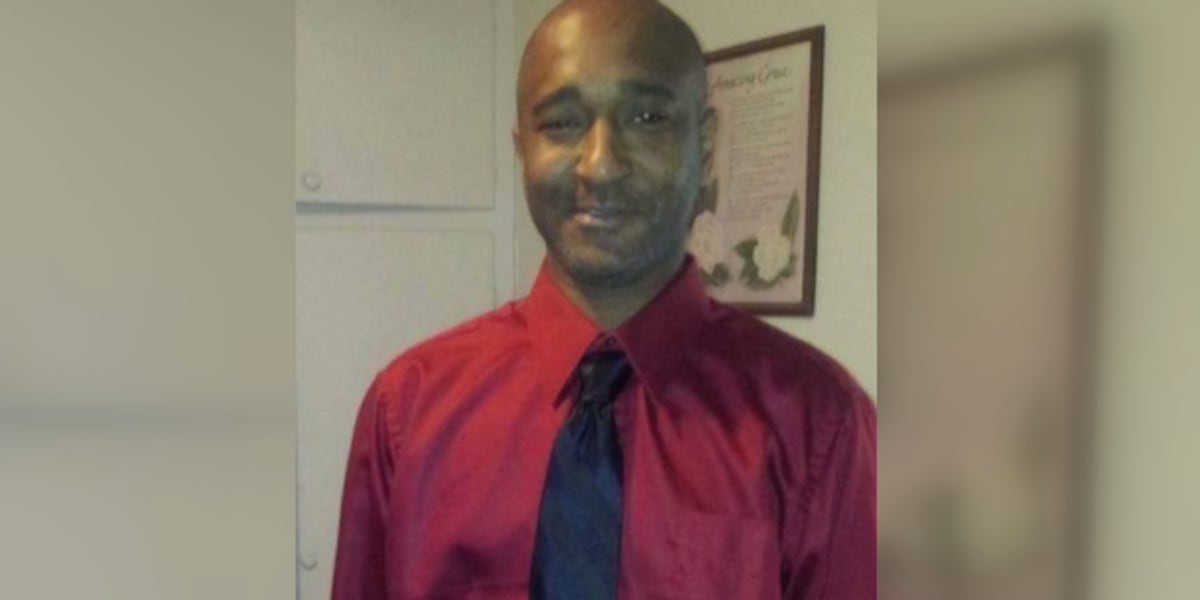
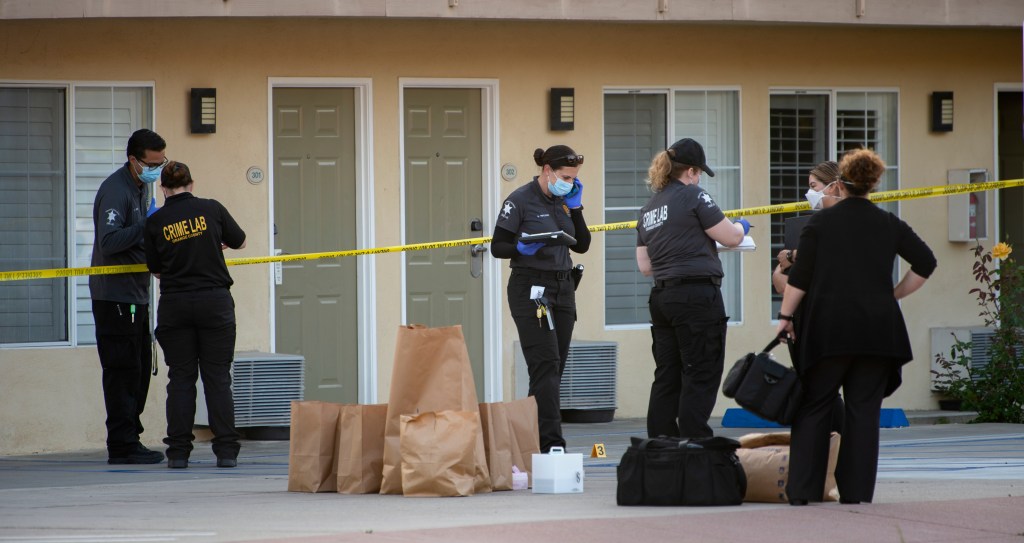




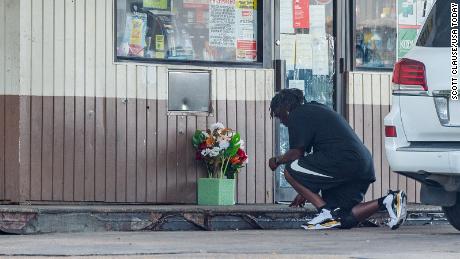
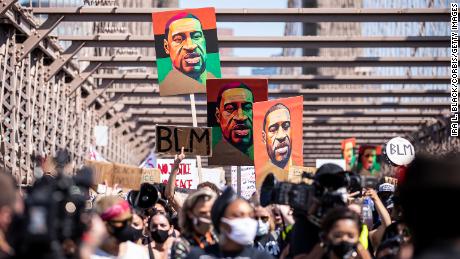

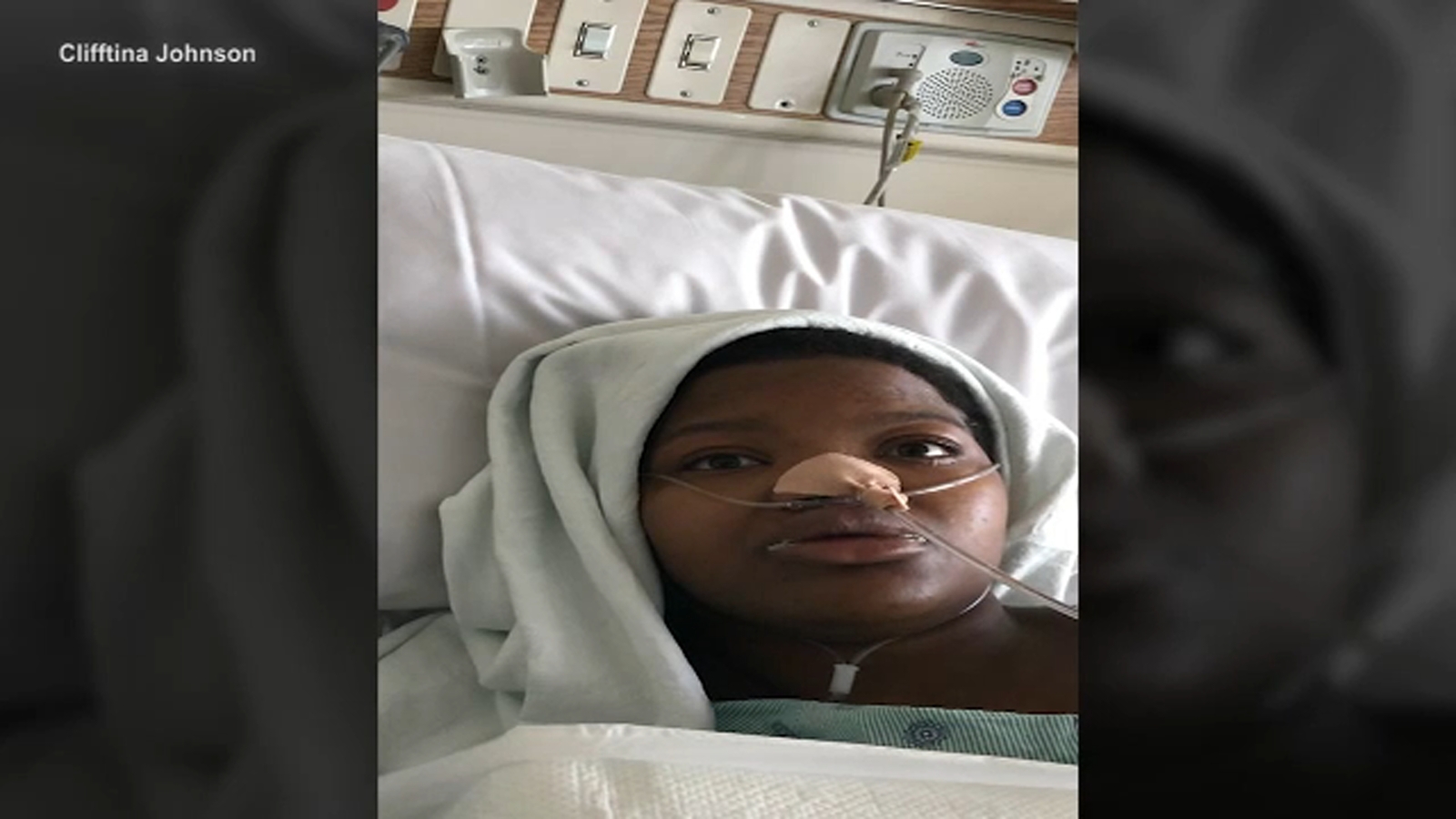
 He's trying to sue Kenneth Walker for HIS job-related injury? FOH!
He's trying to sue Kenneth Walker for HIS job-related injury? FOH!